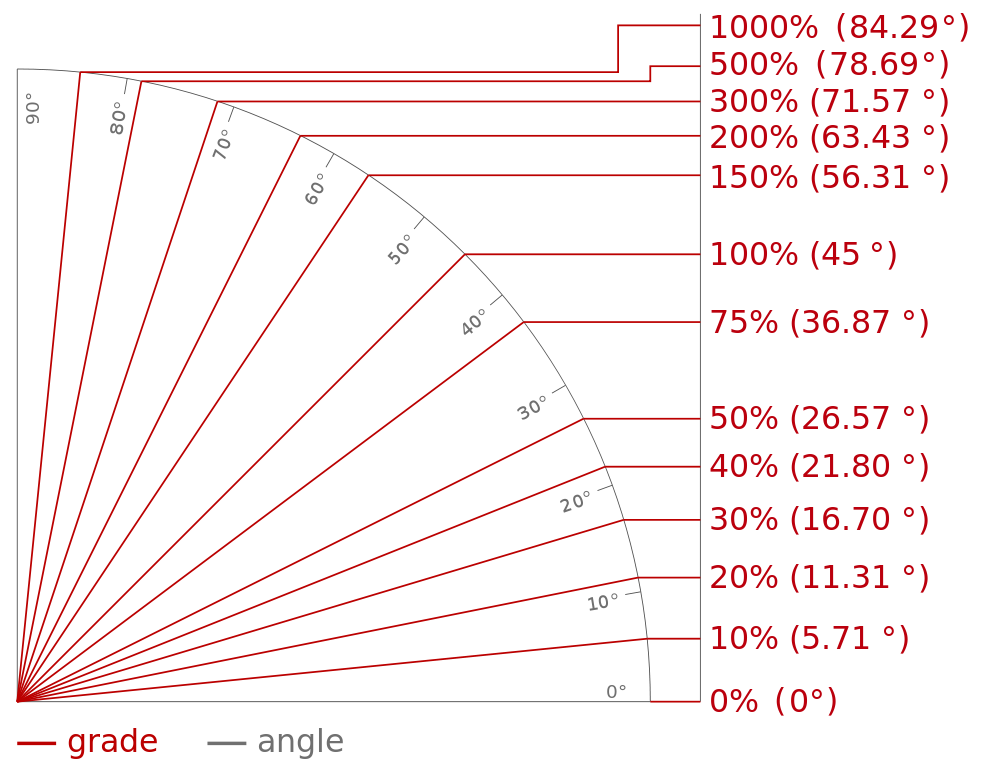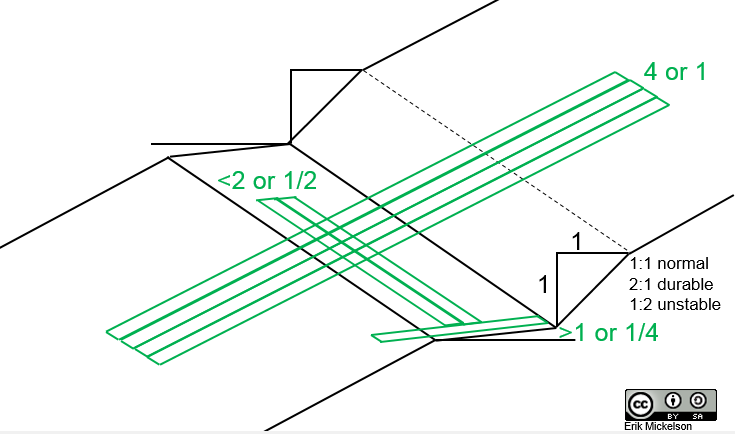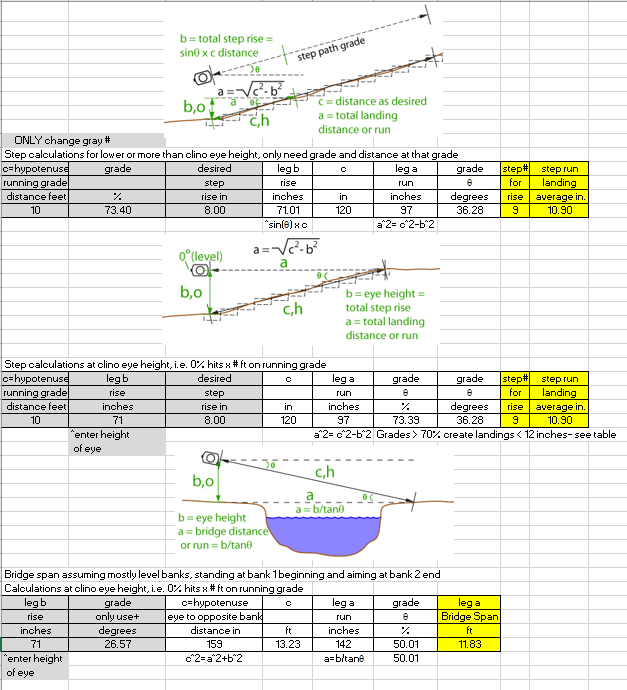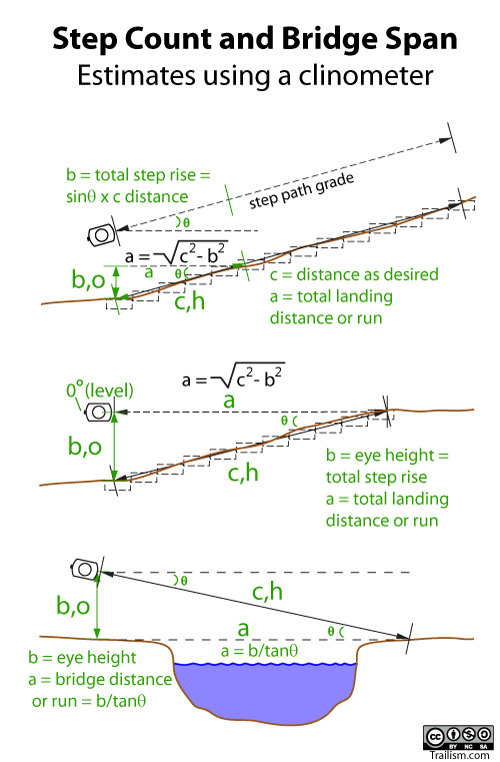A short and incomplete list of equations and calculators useful for trails.
Math (elsewhere) On This Site
- Jumps with calculator
- Rollers and drains
- Turns with calculator
- Downhill coasting
- Rigging (diagram) (Excel spreadsheet)
- Dragging diagram
- Levers (rock bars) (diagram)
- Walls (diagram) (Excel: Lateral-Earth-Pressure)
- Stairs (trail-step-calculatorv2)
- Sudoku, what?
Layout Equations
Grades
![]()
![]()
or ![]()
![]()

note: Forest Service Trail Accessibility Guidelines (FSTAG) 7.4.3.2 “The cross slope [out slope] shall not exceed 1:20 (5 percent). Where the surface is paved or is elevated above the natural ground, the cross slope shall not be steeper than 1:48 (2 percent).”

Half Rule

![]()
![]()
or ![]()
Trail Length
A rough estimate of the trail length for a segment based on elevation gain or loss (typically the average grade should be less than 10%):
![]()
Steps


Turns
![]()
![]()
180° Turn Grades? Rise/Run @ Diameter vs. Rise/Run @ Circumference:
Turn G’s
Feeling Heavy:
![]()
Feeling Light:
![]()
More on the complicated machinations of turning on a bike:
- Turning Radius calculation
- Geometry and Kinematics
- Bikes Don’t Turn by Leaning
- Counter-Steering Made Easy-Peasy
- Why does a cyclist bend or lean during a turn?
- Bicycle and motorcycle dynamics
- Bicycle Physics
- The bicycle problem that nearly broke mathematics
I hope to publish some nomograms in the future for some of the above math applications on this and other pages.
